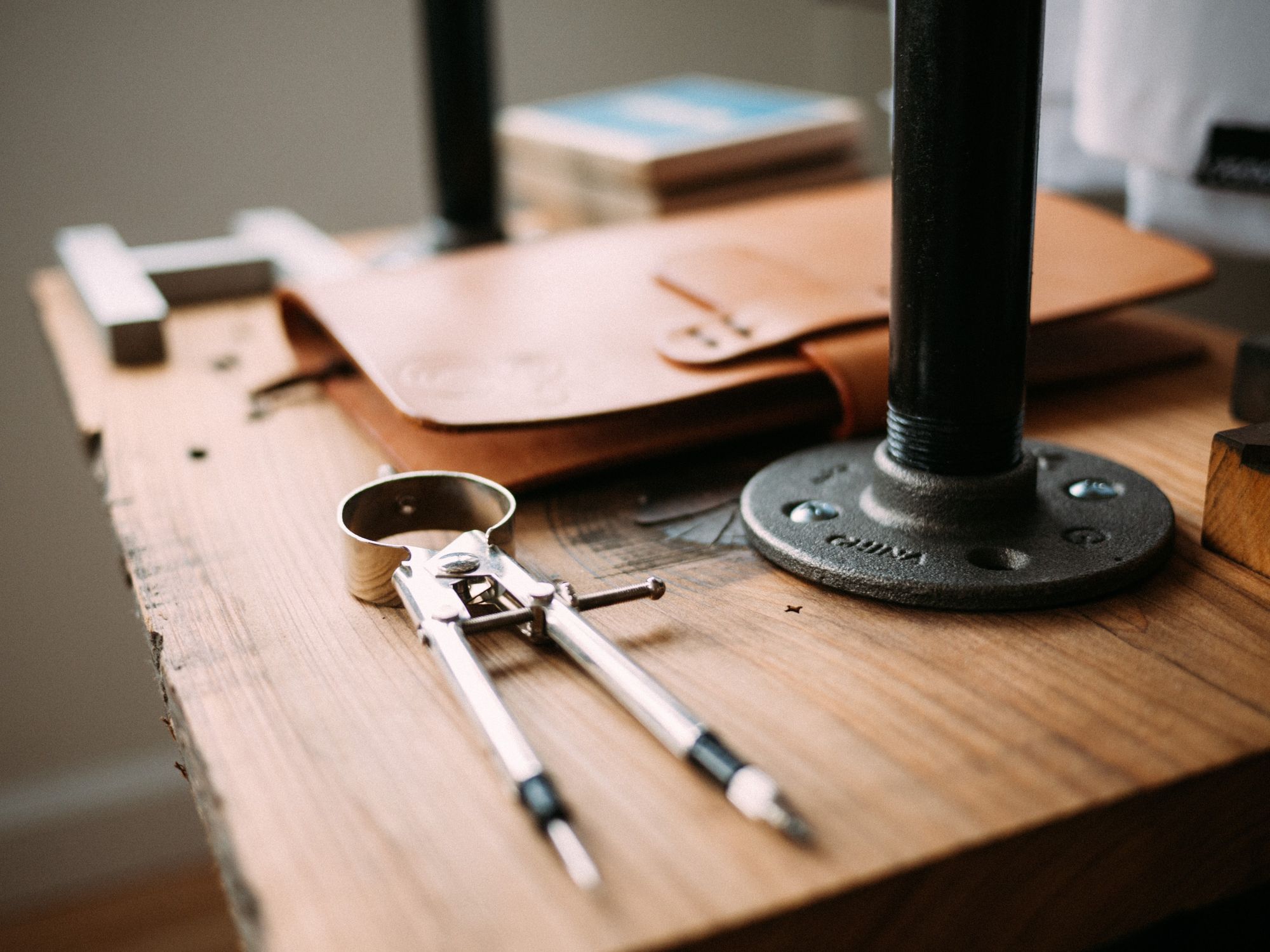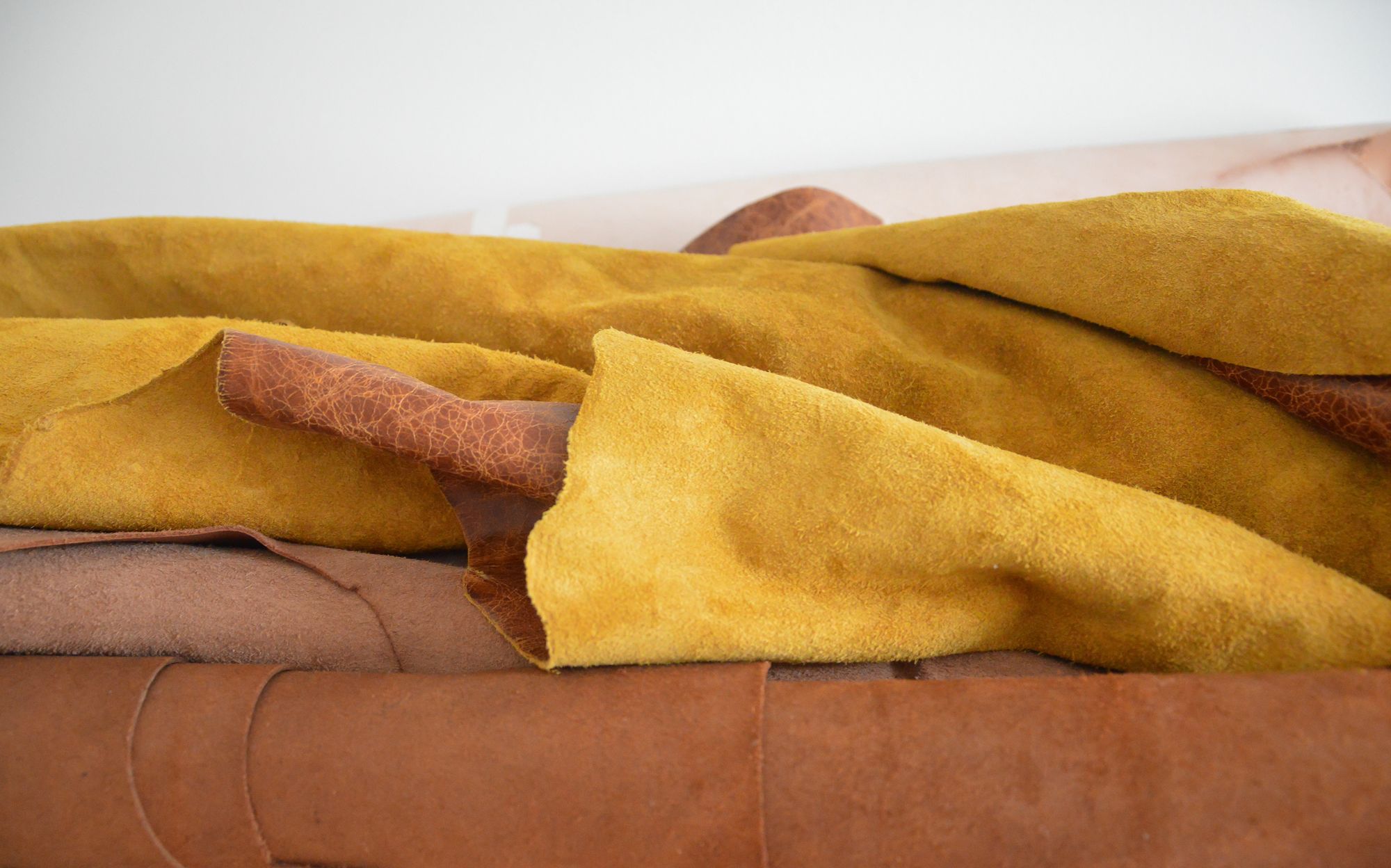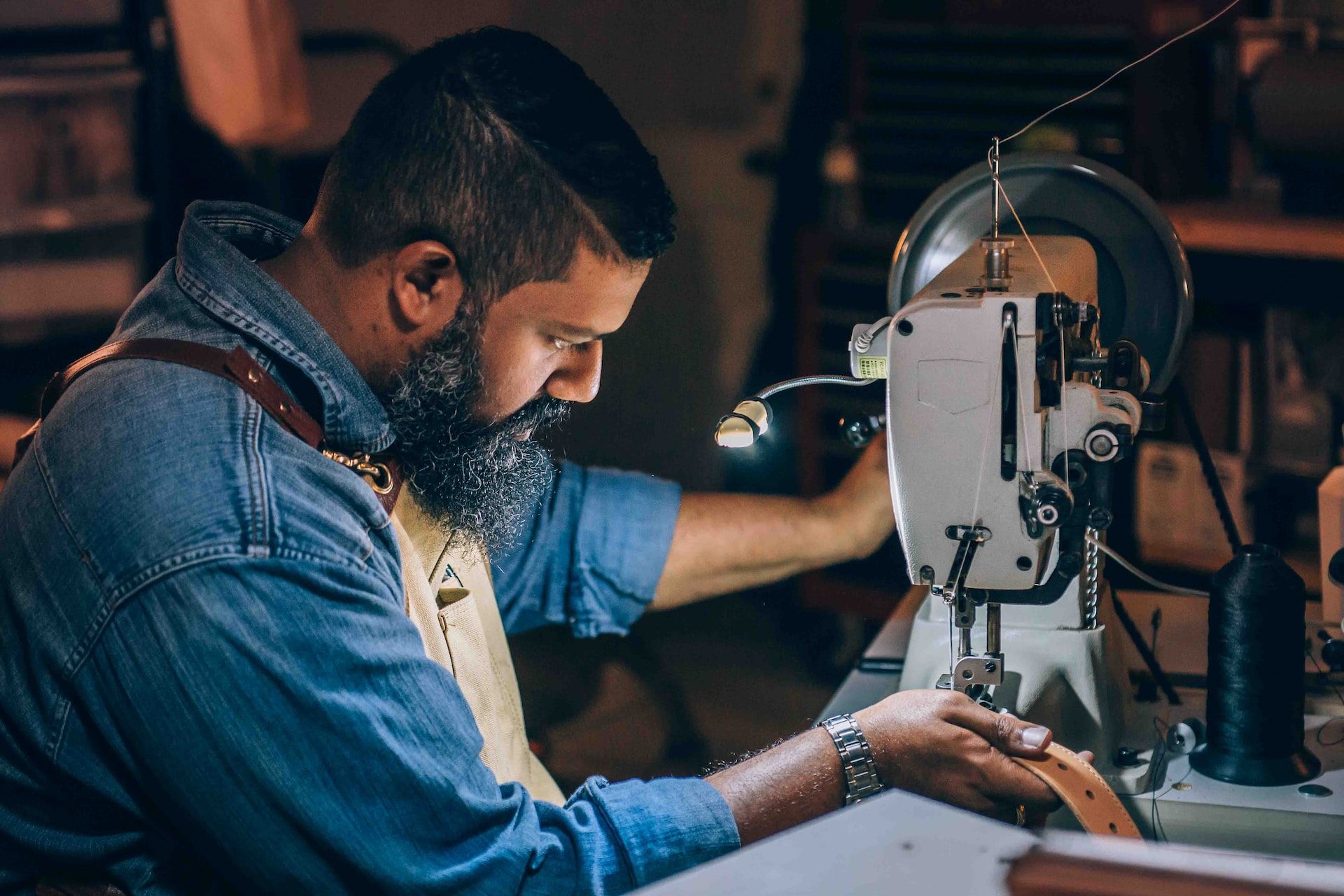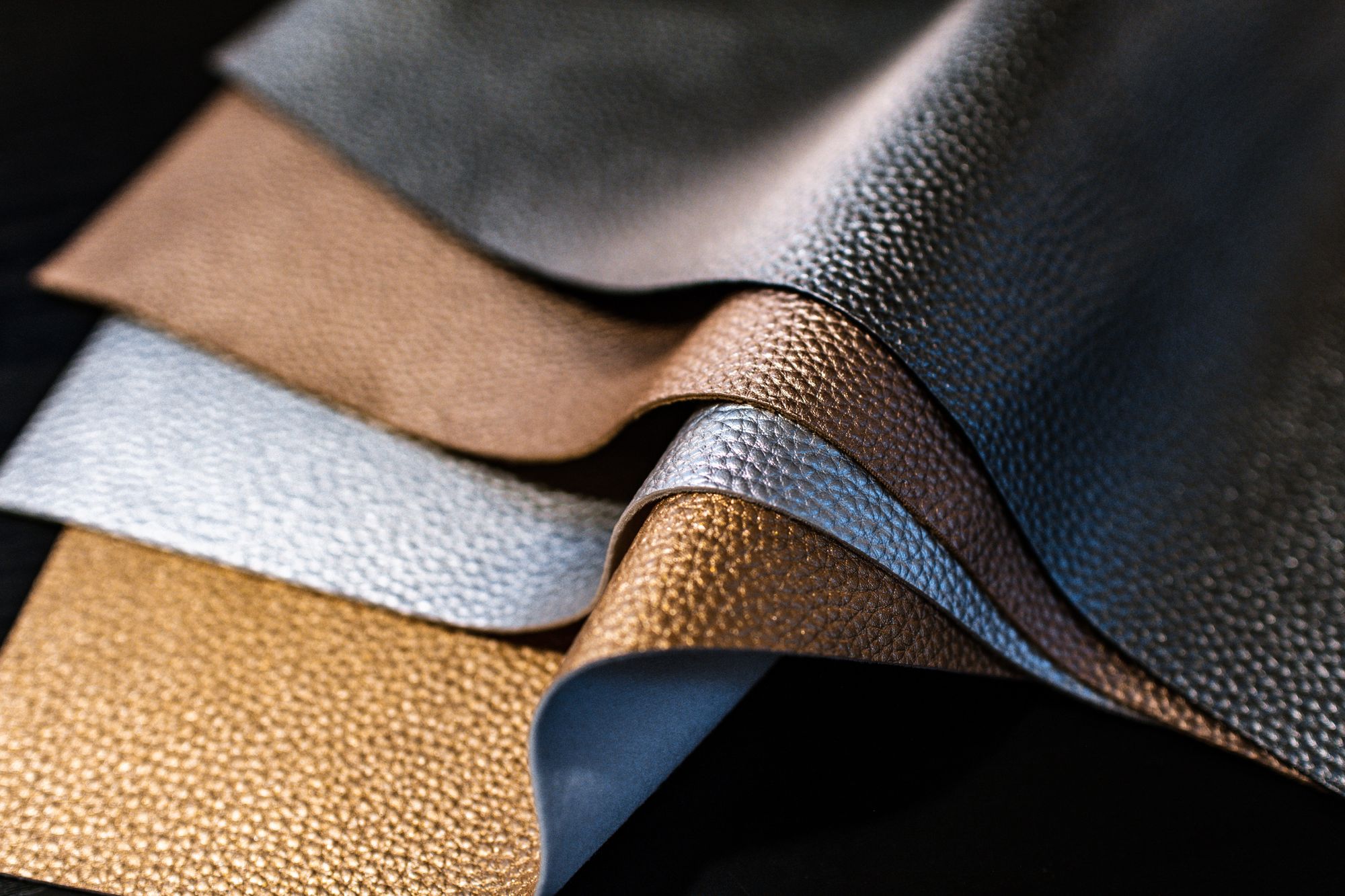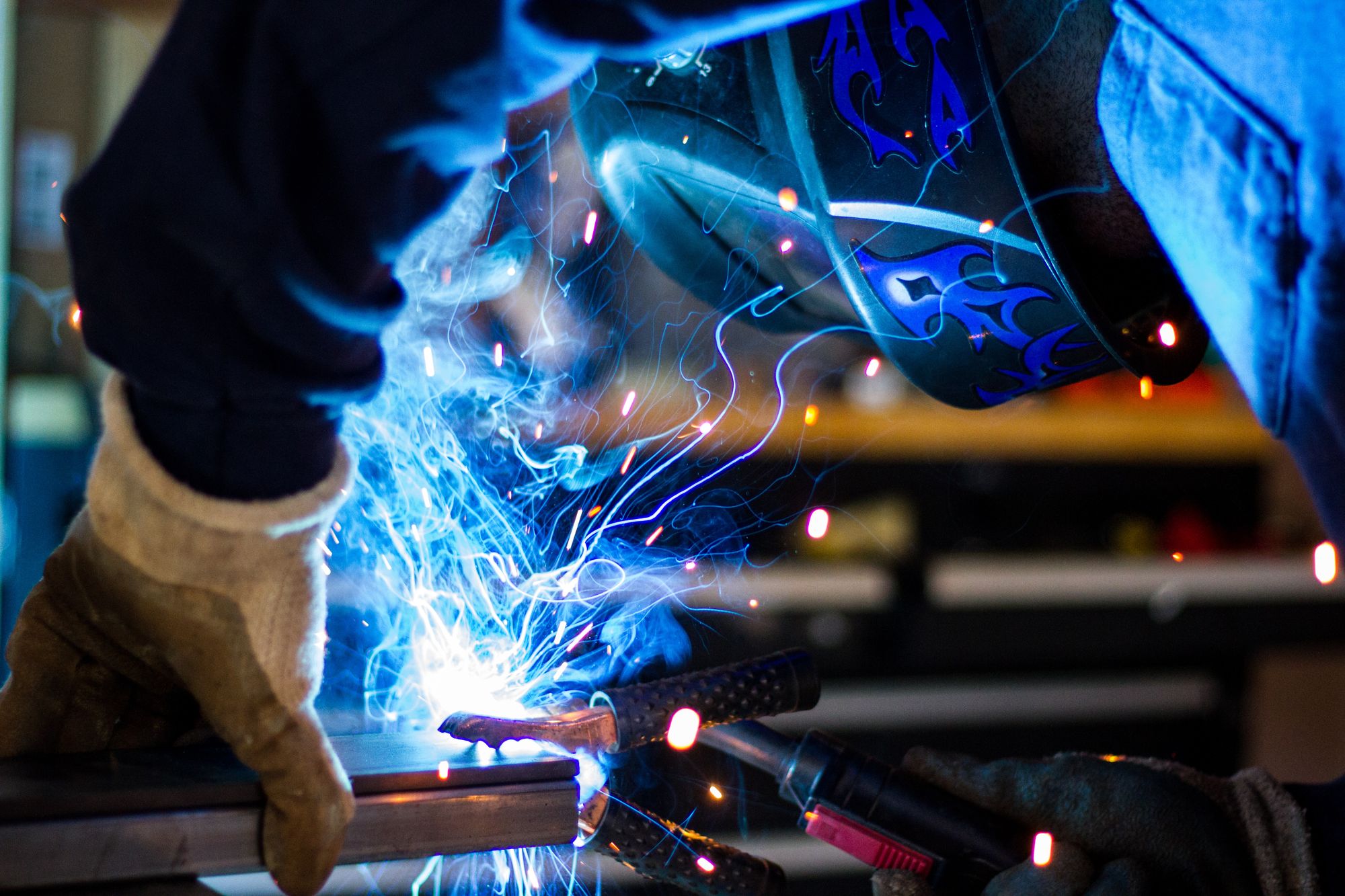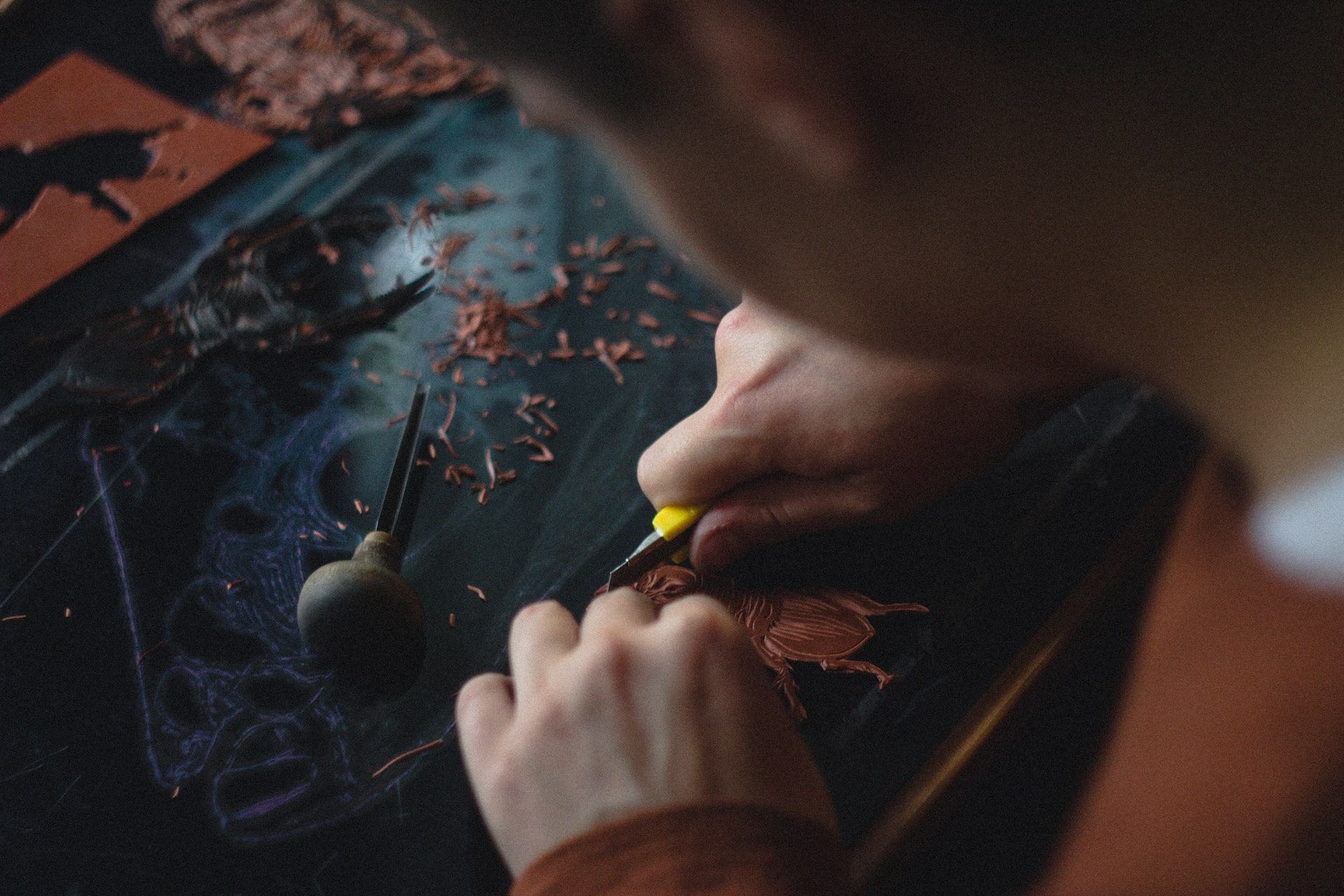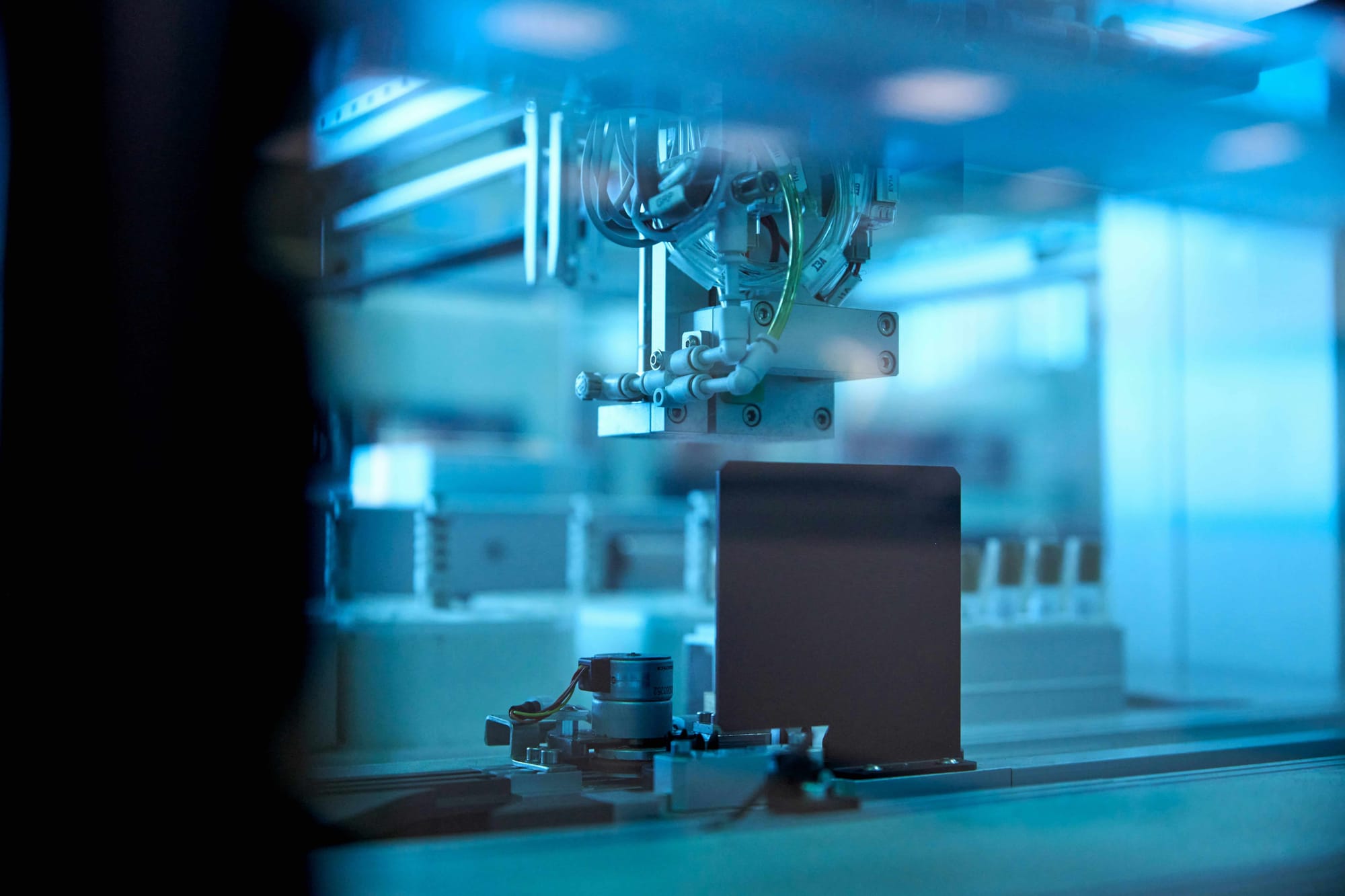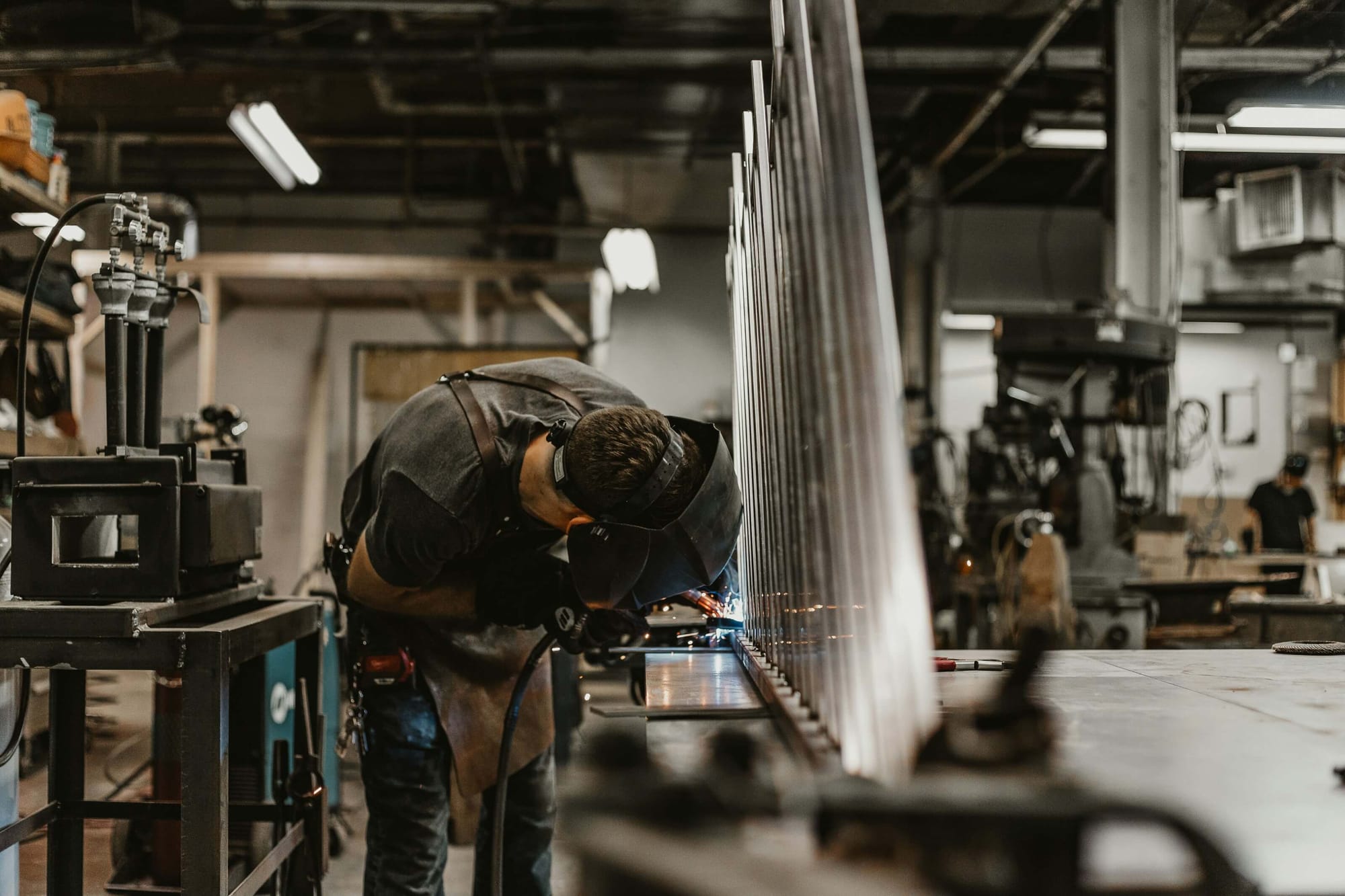In the age of modern technology, there are many different materials that can be used in the manufacture of items. However, one material that is constantly in demand is leather. What is leather, and why is it so popular?
Leather is a flexible material that comes from the skin of animals. The most common sources of leather are cows and pigs. Leather is used for a variety of products, including clothing, bags, gloves, and shoes.
Understanding the different leather manufacturing methods can help consumers make informed choices when purchasing leather products and can help manufacturers make decisions about how to produce high-quality leather products while minimizing their impact on the environment.
In this article, we will provide an overview of traditional, eco-friendly, and high-tech leather manufacturing methods, as well as the regulations and standards that apply to the leather manufacturing industry. Let’s take a look at the table of content below:
- Leather and its Uses
- What is Leather Manufacturing?
- Importance of Understanding Leather Manufacturing Methods
- Traditional Leather Manufacturing Methods
- Modern Leather Manufacturing Methods
- High-Tech Leather Manufacturing Methods
- Leather Manufacturing Regulations
- Frequently Asked Questions (FAQs) Associated with Leather Manufacturing Methods
- Wrapping Up
- How Deskera Can Assist You?
Leather and its Uses
Leather is a material produced by tanning animal rawhide or skin, typically from cattle. The tanning process converts the rawhide or skin into a durable and flexible material that is resistant to water and decay. The leather is then used in a wide range of applications, from fashion accessories to industrial machinery.
There are different types of leather, depending on the animal skin used, tanning process, and final product use.
Some of the most common types of leather include:
- Full-grain leather: This type of leather is made from the entire animal hide, with minimal processing. It is the most durable and natural-looking leather, with a unique texture and grain.
- Top-grain leather: This type of leather is made from the top layer of the animal hide, which is sanded and buffed to remove any imperfections. It is more uniform in texture and appearance than full-grain leather, but not as durable.
- Split leather: This type of leather is made from the lower layers of the animal hide, which are split off from the top layer. It is less durable than full-grain or top-grain leather but is often used in cheaper products such as jackets and bags.
- Patent leather: This type of leather is coated with a glossy finish and is commonly used in dress shoes and accessories.
Leather has been used for thousands of years for various purposes, such as clothing, footwear, bags, and accessories. Here are some of the most common uses of leather:
- Apparel: Leather jackets, pants, and skirts are fashionable and durable, making them a popular choice for both casual and formal wear.
- Footwear: Leather boots, shoes, and sandals are comfortable, long-lasting, and versatile, making them a popular choice for all types of occasions.
- Bags and accessories: Leather bags, wallets, belts, and watch straps are durable, stylish, and timeless.
- Furniture: Leather is a popular choice for furniture upholstery, as it is comfortable, durable, and easy to clean.
- Automotive: Leather seats and interiors are a common feature in high-end cars and are considered a luxury item.
- Industrial: Leather is also used in industrial applications such as machinery belts, conveyor belts, and gaskets, due to its durability and resistance to abrasion.
In conclusion, leather is a versatile and durable material that has been used for thousands of years for a variety of purposes. Its popularity remains high due to its comfort, durability, and timeless appeal, making it a staple in fashion, accessories, furniture, and industrial applications.
What is Leather Manufacturing?
Leather manufacturing is the process of transforming animal hides or skins into usable leather. The manufacturing process involves several stages, each of which contributes to the quality and durability of the final product.
Following, we've discussed some crucial general steps involved in the leather manufacturing process:
Preparing the hides or skins:
The first step is to remove any excess flesh, hair, and fat from the hides or skins. This is done by soaking them in water to soften them and then using a machine to remove the unwanted material.
Tanning:
This is the most critical step in the leather manufacturing process, as it converts the rawhide or skin into usable leather. Tanning involves treating the hides or skins with tanning agents, which can be natural or synthetic.
Furthermore, the most common tanning agents used are chromium, vegetable, and aldehyde. Tanning gives the leather its unique texture, durability, and resistance to water and decay.
Coloring and Finishing:
Once the leather is tanned, it is dyed to achieve the desired color. The leather is then finished with various chemicals to add softness, durability, and water resistance. The finishing process can also add decorative effects such as embossing or printing.
Cutting and Stitching:
After finishing, the leather is cut into the desired shapes for the final product. The pieces are then stitched together to make clothing, footwear, bags, or other accessories.
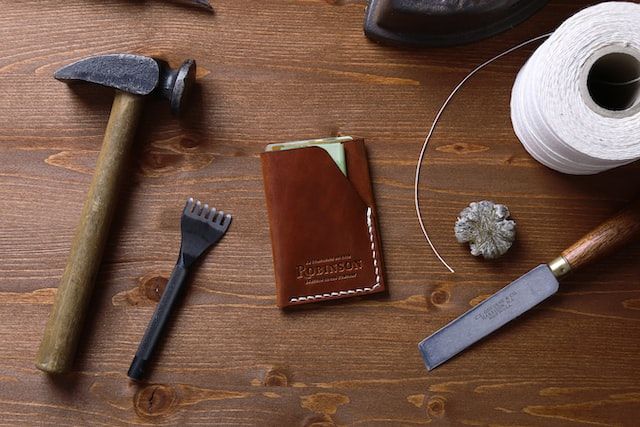
Quality Control:
The final stage of leather manufacturing is quality control. This involves inspecting the leather for defects and ensuring that it meets the required specifications for its intended use.
Furthermore, the leather manufacturing process can vary depending on the type of leather, the tanning method used, and the final product. However, the general steps outlined above are common to most leather manufacturing processes.
Importance of Understanding Leather Manufacturing Methods
Understanding leather manufacturing methods is essential for several reasons:
Quality Control:
Understanding leather manufacturing methods allows you to evaluate the quality of the leather product you are purchasing. Moreover, you can assess the tanning method used, the quality of the leather, and the finishing techniques to determine if the product meets your standards.
Product Design:
Knowledge of leather manufacturing methods can also help in the design of leather products. Understanding the properties of different types of leather and the tanning methods used can help in selecting the right leather for a specific product.
Sustainability:
Understanding leather manufacturing methods can also help you choose more sustainable and eco-friendly products. Tanning methods that use fewer chemicals and natural dyes can reduce the environmental impact of leather manufacturing.
Cost:
Knowing about leather manufacturing methods can help you make informed purchasing decisions based on the cost of production. Leather products made using traditional methods are likely to be more expensive than those made using cheaper and less environmentally friendly methods.
Preservation:
Knowing the manufacturing methods can help in preserving leather products. Proper care of leather products is necessary to maintain their quality and durability.
Moreover, understanding the manufacturing process can help in identifying the care needs of the leather product, such as appropriate cleaning methods and conditioning products.
Consequently, understanding leather manufacturing methods is important for making informed purchasing decisions, designing leather products, sustainability, cost considerations, and proper care and preservation of leather products.
Traditional Leather Manufacturing Methods
Following, we’ve discussed traditional leather manufacturing methods. Let’s discuss:
(A) Tanning:
Tanning is the process of converting animal hides or skins into usable leather. It is an essential step in the leather manufacturing process that gives the leather its unique texture, durability, and resistance to water and decay. There are various tanning methods, but the two most common are vegetable tanning and chrome tanning.
- Vegetable Tanning:
Vegetable tanning is one of the oldest and traditional tanning methods, which involves treating hides or skins with natural tannins found in plants such as oak, chestnut, and quebracho. The process takes longer compared to chrome tanning, but it produces a high-quality leather that is durable, breathable, and ages beautifully.
The process involves soaking the hides in a series of pits containing tannin-rich solutions, and the hides are progressively moved from pit to pit. The tanning process takes about 30-60 days, depending on the thickness of the hides and the desired quality of the leather.
Vegetable tanning produces leather that is stiff, firm, and natural in color, with a slightly acidic smell. The leather is also more resistant to water and heat than chrome-tanned leather. The leather produced through vegetable tanning is commonly used in luxury leather goods such as bags, belts, and shoes.
2. Chrome Tanning:
Chrome tanning is a more modern tanning method that uses chromium salts to tan animal hides or skins. This process is faster and more cost-effective than vegetable tanning, and it produces a more uniform and flexible leather.
Furthermore, chrome tanning also produces leather with a wider range of colors and textures, making it popular for mass-produced leather goods such as upholstery, car interiors, and footwear.
The process of chrome tanning involves soaking the hides in a bath of chromium salts, which react with the collagen fibers in the hides, making them water-resistant and stable. The tanning process takes about a day or two, depending on the thickness of the hides and the desired quality of the leather.
Chrome tanning produces leather that is soft, supple, and easy to work with, making it popular for a wide range of leather products. However, chrome-tanned leather is less durable and less breathable than vegetable-tanned leather. Chromium salts are also harmful to the environment if not disposed of properly.
Consequently, both vegetable tanning and chrome tanning are common methods of tanning animal hides or skins to produce high-quality leather. Vegetable tanning produces a more natural and durable leather that is ideal for luxury leather goods, while chrome tanning produces a more uniform and flexible leather that is suitable for mass-produced leather goods.
(B) Leather Processing
Leather processing involves a series of steps that transform raw animal hides or skins into high-quality leather products. The following are the different steps involved in leather processing:
- Sorting and Soaking:
The first step in leather processing involves sorting the raw animal hides or skins based on their quality and thickness. The hides or skins are then soaked in water to remove any dirt, blood, or excess salt that may be present. This process softens the hides and prepares them for further processing.
2. Liming and Fleshing:
The next step in leather processing is liming, which involves treating the hides or skins with lime and other chemicals to remove the hair, epidermis, and other unwanted materials. The hides or skins are then fleshed to remove any excess flesh and fat that may be present.
3. Splitting and Shaving:
After liming and fleshing, the hides or skins are split and shaved to obtain a uniform thickness. The leather is split into two layers, the top layer or grain side, which is used for high-quality leather products, and the bottom layer or flesh side, which is used for less expensive leather products.
4. Dehairing and Pickling:
After splitting and shaving, the hides or skins are dehaired and pickled to remove any remaining hair and prepare them for tanning. Dehairing involves treating the hides or skins with lime and sodium sulfide to dissolve the hair, while pickling involves treating them with a solution of salt and acid to prevent bacterial growth.
5. Bating and Tanning:
The next step in leather processing is bating, which involves treating the hides or skins with enzymes to soften and prepare them for tanning. The hides or skins are then tanned using one of several methods, such as vegetable tanning or chrome tanning, to stabilize the collagen fibers and give the leather its unique texture and durability.
6. Neutralizing and Dyeing:
After tanning, the hides or skins are neutralized to remove any excess chemicals and restore their natural pH balance. The leather is then dyed using natural or synthetic dyes to achieve the desired color and texture.
7. Conditioning and Finishing:
The final step in leather processing involves conditioning and finishing the leather. Conditioning involves treating the leather with oils and waxes to enhance its suppleness and durability. The leather is then finished using one of several techniques, such as buffing, embossing, or glazing, to create the desired texture and appearance.
In conclusion, leather processing involves a series of steps that transform raw animal hides or skins into high-quality leather products. Each step is crucial in determining the quality and properties of the final product. Proper care and attention to detail throughout the leather processing steps can result in a durable, beautiful, and long-lasting leather product.
Modern Leather Manufacturing Methods
Following, we've discussed crucial modern leather manufacturing methods. Let's discuss:
(A) Eco-Friendly Leather Manufacturing Methods
With an increasing concern for sustainability and the environment, modern leather manufacturing methods have been developed that are more eco-friendly. Two such methods are vegetable-tanned leather and water-based tanning.
- Vegetable-Tanned Leather:
Vegetable-tanned leather is a type of leather that is tanned using natural materials, such as bark, leaves, and fruits. This method has been used for centuries and is considered to be one of the most eco-friendly ways of tanning leather.
Furthermore, the tanning process takes longer than other methods, but it results in a high-quality leather that is durable and has a natural, rustic appearance. Vegetable-tanned leather is also biodegradable and free from harmful chemicals.
2. Water-based Tanning:
Water-based tanning is another eco-friendly method of tanning leather. It uses water-based chemicals instead of the traditional oil-based chemicals, which can be harmful to the environment.
Furthermore, the water-based chemicals used in this method are also less toxic and are easier to dispose of. Water-based tanning also uses less water and energy than other methods, making it a more sustainable option.
The process of water-based tanning involves soaking the leather in water-based chemicals and then drying and conditioning it. The leather produced using this method is soft, supple, and has a natural appearance.
In conclusion, eco-friendly leather manufacturing methods, such as vegetable-tanned leather and water-based tanning, offer a more sustainable and environmentally friendly way of producing leather.
These methods use natural and water-based chemicals instead of harmful chemicals, resulting in a high-quality leather that is biodegradable and free from toxins.
As consumers become more environmentally conscious, the demand for eco-friendly leather products is likely to increase, and these methods will play a critical role in meeting this demand.
High-Tech Leather Manufacturing Methods
High-tech leather manufacturing methods have emerged with the advancement of technology. These methods involve the use of advanced equipment and technology to improve the quality, efficiency, and precision of the leather manufacturing process. Three such methods are laser-cutting, digital printing, and nanotechnology.
1.Laser-cutting:
Laser-cutting is a high-tech method of cutting leather using a laser beam. This method is highly precise and allows for intricate designs and patterns to be cut into the leather with minimal waste.
Furthermore, laser-cutting is also faster than traditional cutting methods and can be used to cut multiple layers of leather at once. This method is used to create complex designs on leather products such as bags, jackets, and shoes.
2. Digital Printing:
Digital printing is another high-tech method used in leather manufacturing. It involves printing designs directly onto the leather using digital printers. This method allows for high-quality, detailed designs to be printed onto the leather with vivid colors and precision.
Moreover, digital printing is also faster than traditional printing methods and can be used to produce small batches of customized leather products. This method is used in creating leather products such as bags, shoes, and accessories.
3. Nanotechnology:
Nanotechnology involves the use of microscopic particles to improve the properties of leather. The use of nanotechnology in leather manufacturing has resulted in leather products that are more durable, water-resistant, and stain resistant.
Additionally, nanotechnology can also be used to create leather products with enhanced antibacterial and antifungal properties. This technology is used in the production of high-end leather products such as luxury bags and accessories.
In conclusion, high-tech leather manufacturing methods such as laser-cutting, digital printing, and nanotechnology have revolutionized the leather industry. These methods offer increased efficiency, precision, and quality, resulting in leather products that are more durable, customizable, and visually appealing. As technology continues to evolve, we can expect more advancements in high-tech leather manufacturing methods in the future.
Leather Manufacturing Regulations
The leather manufacturing industry is subject to various regulations aimed at ensuring product quality, worker safety, and environmental protection. These regulations are enforced by government agencies, such as the Environmental Protection Agency (EPA) and the Occupational Safety and Health Administration (OSHA).
Here are three types of regulations that apply to the leather manufacturing industry:
A. Leather Manufacturing Industry Standards:
The leather manufacturing industry is subject to industry standards that set guidelines for the quality of leather products. These standards cover various aspects of the manufacturing process, including the types of chemicals used, the tanning process, and the final product quality. Compliance with industry standards is voluntary but can be used as a measure of product quality.
B. Leather Safety Regulations:
Worker safety is a significant concern in the leather manufacturing industry, given the use of hazardous chemicals and machinery. OSHA sets safety regulations that cover aspects such as protective equipment, training, and safe work practices. Employers are required to provide a safe workplace and ensure that workers are adequately trained and equipped to handle the hazards of the job.
C. Environmental Regulations:
The leather manufacturing process can have significant environmental impacts due to the use of chemicals and the generation of waste. The EPA sets regulations that limit the amount of pollutants that can be released into the air and water during the manufacturing process.
Furthermore, the regulations cover aspects such as wastewater treatment, solid waste disposal, and air emissions. Compliance with these regulations is mandatory, and non-compliance can result in fines or other penalties.
Consequently, the leather manufacturing industry is subject to various regulations aimed at ensuring product quality, worker safety, and environmental protection.
Furthermore, compliance with these regulations is essential for the long-term sustainability of the industry and for meeting the demands of consumers who are increasingly concerned about the environmental and social impacts of the products they purchase.
As the industry continues to evolve, it will be essential to maintain high standards of quality, safety, and environmental responsibility.
Frequently Asked Questions (FAQs) Associated with Leather Manufacturing Methods
Following, we’ve discussed some frequently asked questions (FAQs) on leather manufacturing methods. Let’s discuss:
Que 1: What is eco-friendly leather manufacturing?
Ans: Eco-friendly leather manufacturing involves using sustainable and environmentally friendly methods to produce leather. Vegetable tanning and water-based tanning are two eco-friendly methods that are gaining popularity.
Que 2: What is the purpose of conditioning and finishing in leather manufacturing?
Ans: Conditioning and finishing involve treating the leather to improve its appearance and durability. Furthermore, conditioning involves adding oils and waxes to the leather to make it softer and more supple, while finishing involves adding pigments and coatings to the leather to improve its color, water resistance, and other properties.
Que 3: How do eco-friendly leather manufacturing methods benefit the environment?
Ans: Eco-friendly leather manufacturing methods reduce the use of harmful chemicals, reduce water usage, and produce less waste, leading to a lower environmental impact. These methods also often use renewable resources, such as natural plant tannins, and are often produced using sustainable farming practices.
Que 4: How do high-tech leather manufacturing methods improve the quality of leather products?
Ans: High-tech leather manufacturing methods such as laser-cutting and digital printing allow for greater precision and detail in the design and production of leather products. Nanotechnology can also be used to enhance the properties of leather, such as making it more durable and water-resistant.
In conclusion, understanding the different methods used in leather manufacturing can help consumers make informed decisions when purchasing leather products. The traditional, eco-friendly, and high-tech methods all have their unique benefits and drawbacks, and it's important to consider the impact of the manufacturing process on the environment and workers, as well as the quality and appearance of the final product.
Wrapping Up
In conclusion, leather is a versatile material that is widely used in various industries, from fashion to automotive and furniture. The manufacturing process of leather involves several methods, each with its advantages and disadvantages.
Furthermore, the traditional vegetable tanning process is eco-friendly but takes a long time and produces leather that is less durable. Chrome tanning, on the other hand, is faster and produces more durable leather, but it has environmental concerns.
The article has provided a brief guide to some of the most common leather manufacturing methods, including vegetable tanning, chrome tanning, and synthetic tanning. Each of these methods has its unique features and applications. As a consumer, understanding these methods can help you make an informed decision when purchasing leather products.
Overall, the leather manufacturing industry is constantly evolving, with new technologies and methods emerging to address environmental concerns and improve the quality of the leather. It is essential to continue exploring and implementing sustainable practices to ensure the longevity of the industry while preserving the planet's resources.
How Deskera Can Assist You?
Deskera's integrated financial planning tools allow investors to better plan their investments and track their progress. It can help investors make decisions faster and more accurately.
Deskera Books enables you to manage your accounts and finances more effectively. Maintain sound accounting practices by automating accounting operations such as billing, invoicing, and payment processing.

Deskera CRM is a strong solution that manages your sales and assists you in closing agreements quickly. It not only allows you to do critical duties such as lead generation via email, but it also provides you with a comprehensive view of your sales funnel.
Deskera People is a simple tool for taking control of your human resource management functions. The technology not only speeds up payroll processing but also allows you to manage all other activities such as overtime, benefits, bonuses, training programs, and much more. This is your chance to grow your business, increase earnings, and improve the efficiency of the entire production process.
Final Takeaways
We've arrived at the last section of this guide. Let's have a look at some of the most important points to remember:
- Leather manufacturing is the process of transforming animal hides or skins into usable leather. The manufacturing process involves several stages, each of which contributes to the quality and durability of the final product.
- Understanding leather manufacturing methods allows you to evaluate the quality of the leather product you are purchasing. You can assess the tanning method used, the quality of the leather, and the finishing techniques to determine if the product meets your standards.
- Tanning is the process of converting animal hides or skins into usable leather. It is an essential step in the leather manufacturing process that gives the leather its unique texture, durability, and resistance to water and decay.
- Leather processing involves a series of steps that transform raw animal hides or skins into high-quality leather products. Each step is crucial in determining the quality and properties of the final product. Proper care and attention to detail throughout the leather processing steps can result in a durable, beautiful, and long-lasting leather product.
- Laser-cutting is a high-tech method of cutting leather using a laser beam. This method is highly precise and allows for intricate designs and patterns to be cut into the leather with minimal waste.
- Nanotechnology can also be used to create leather products with enhanced antibacterial and antifungal properties. This technology is used in the production of high-end leather products such as luxury bags and accessories.
- Worker safety is a significant concern in the leather manufacturing industry, given the use of hazardous chemicals and machinery. OSHA sets safety regulations that cover aspects such as protective equipment, training, and safe work practices.
- The EPA sets regulations that limit the amount of pollutants that can be released into the air and water during the manufacturing process. The regulations cover aspects such as wastewater treatment, solid waste disposal, and air emissions. Compliance with these regulations is mandatory, and non-compliance can result in fines or other penalties.
Related Articles
